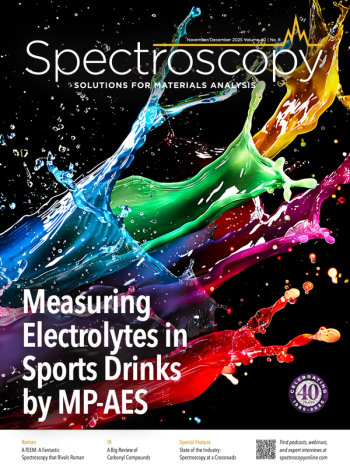
The Impact of Heterogeneity Micro-Beam XRF Scanning Spectroscopy for Environmental Analysis
A new study published in Spectrochimica Acta Part B: Atomic Spectroscopy investigated the effects of heterogeneity, including grain size and mineralogical composition, on micro-beam X-ray fluorescence (XRF) scanning spectroscopy. XRF is a useful tool for environmental analysis, because of its high spatial resolution.
A new study published in Spectrochimica Acta Part B: Atomic Spectroscopy investigated the effects of heterogeneity, including grain size and mineralogical composition, on micro-beam X-ray fluorescence (XRF) scanning spectroscopy. XRF is a useful tool for environmental analysis, because of its high spatial resolution.
The study, led by Nagayoshi Katsuta, an associate professor at Gifu University in Japan, used binary powdered mixtures of ferric oxide (Fe2O3) in the calcium carbonate (CaCO3) or silicon dioxide (SiO2) matrix with nine grain size fractions, four Fe2O3 concentrations, and fine-grained sedimentary cores from Lake Baikal, a lake in south-east Siberia, for analysis. Grain size helps determine mechanical properties and corrosion behavior of materials.
The findings of the study demonstrate that iron (Fe) intensity decreases as grain size increases, but if the grain size is constant, its intensity has a linear relationship with the composition of Fe2O3. The experimental data were in good agreement with theoretical curves, which suggest that if a phase that contains fluorescent elements has narrow ranges of concentration and grain size, the micro-beam XRF spectroscopy enables highly precise calibration from the XRF intensity to element concentration.
The theoretical curves of the Lake Baikal sediment core suggest that the Fe intensity has about a 30% maximum difference in the median grain size range of 3.9–28.2 μm. This variation appears in a scatter of regression between Fe intensity and concentration, but it scarcely affected the XRF intensity variability of sediment composition.
The study provides valuable insights into heterogeneity effects on micro-beam XRF spectroscopy, which can be used to improve the accuracy and precision of elemental analysis in various fields, including earth and environmental sciences.
This article was written with the help of artificial intelligence and has been edited to ensure accuracy and clarity. You can read more about our
Reference
(1) Katsuta, N.; Umemura, A.; Naito, S.; et al. Heterogeneity Effects in Micro-Beam XRF Scanning Spectroscopy of Binary Powdered Mixtures and Lake Sediments. Spectrochim. Acta, Part B 2023, 210, 106817. DOI:
Newsletter
Get essential updates on the latest spectroscopy technologies, regulatory standards, and best practices—subscribe today to Spectroscopy.


